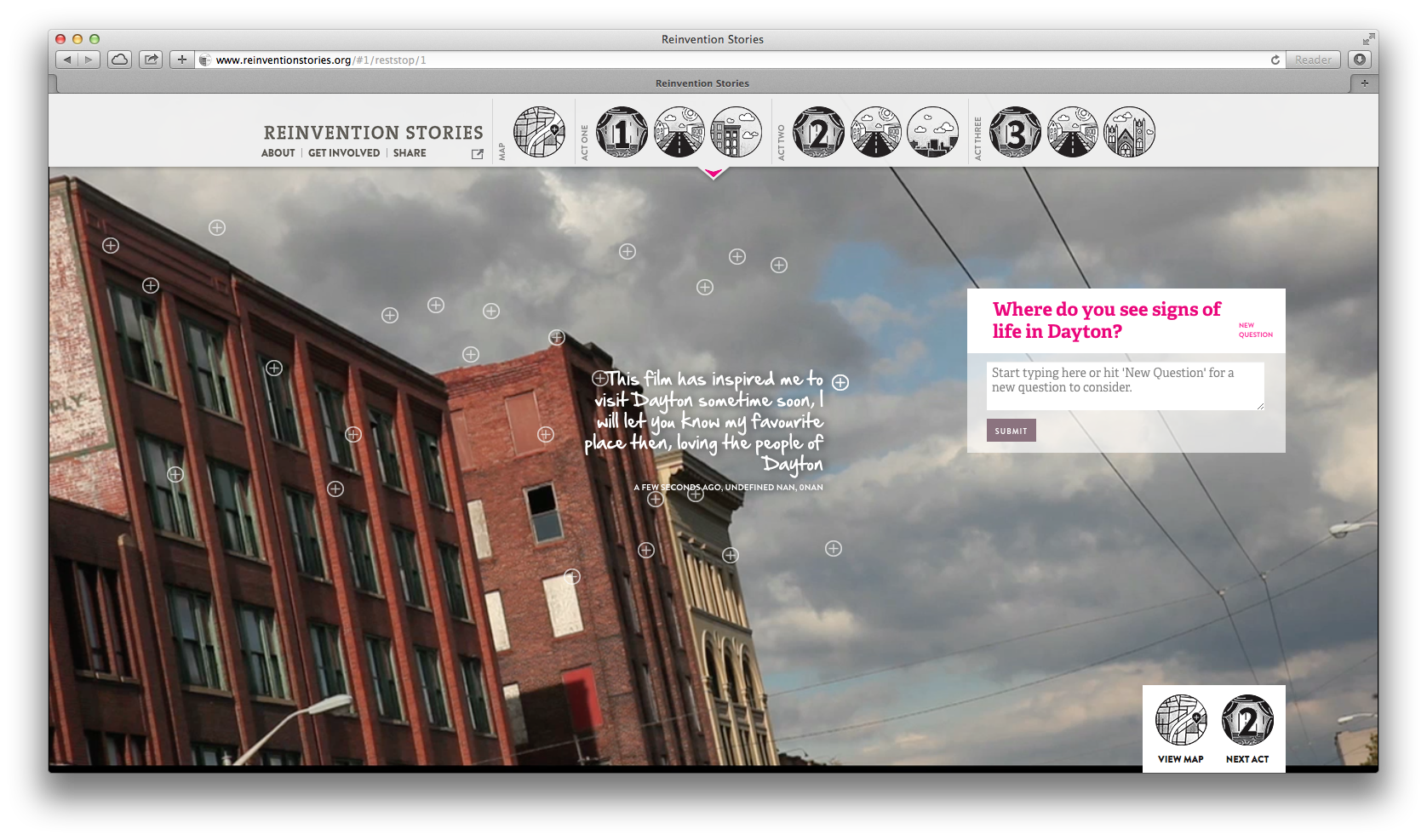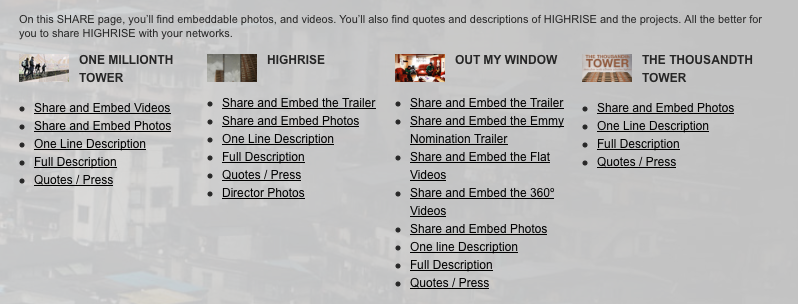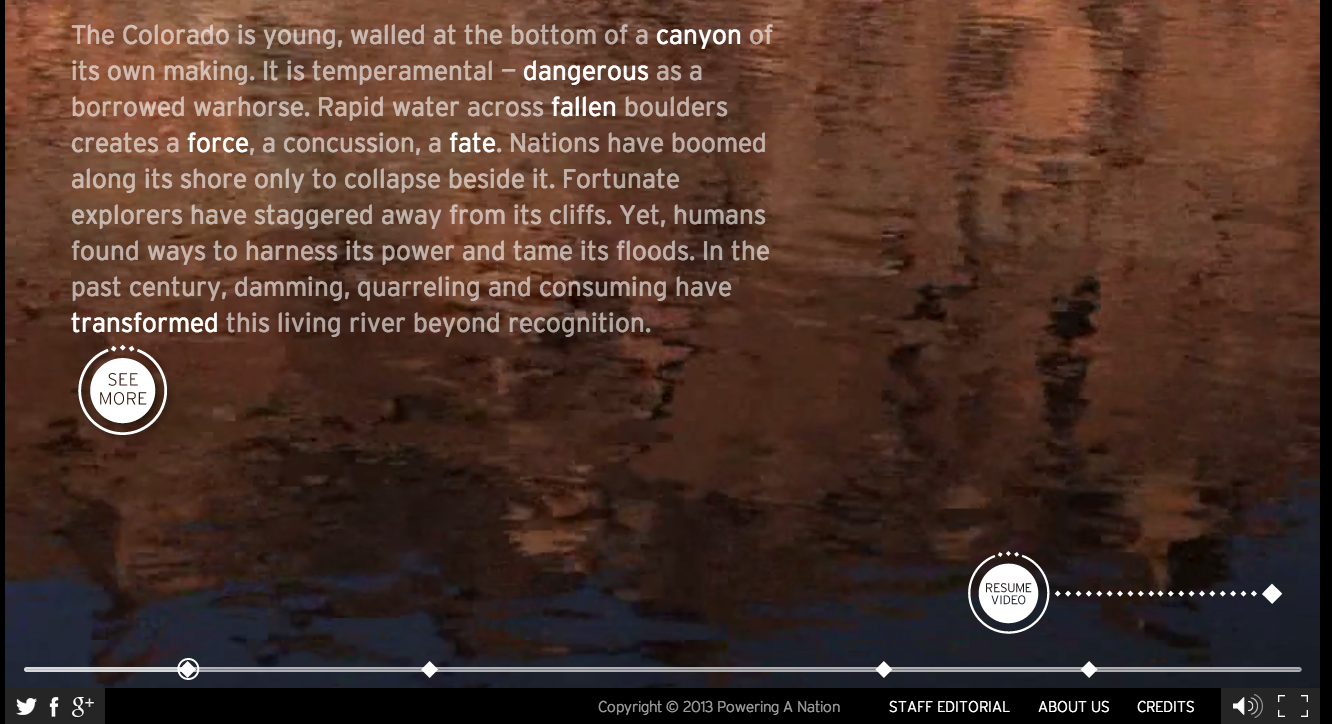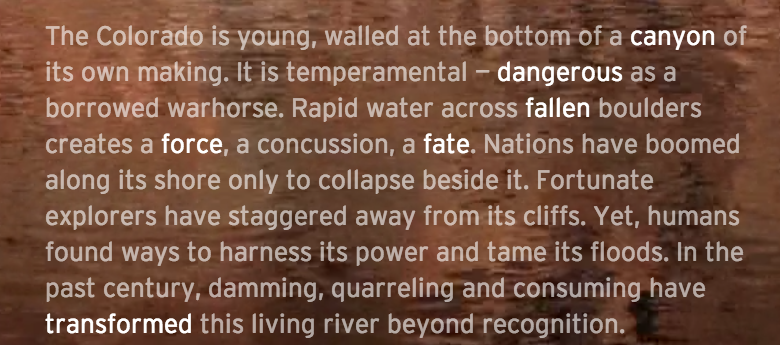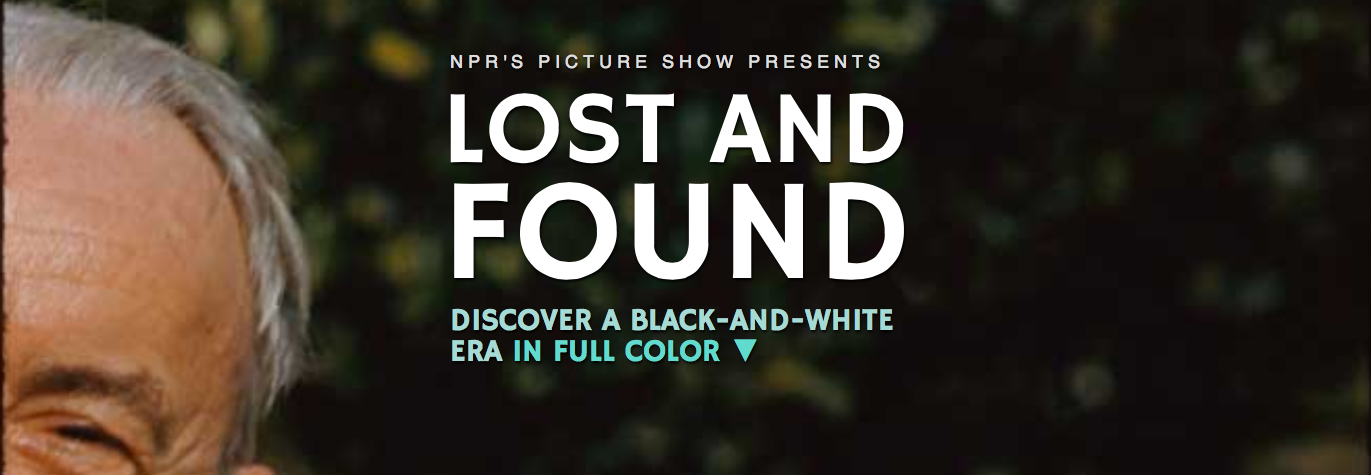I like the way that questions are posed to the user in Reinvention Stories and how answers appear on the screen. This could be useful in my question section:
BLOG
Sharing Resources
As I was scrolling through the “collaborative documentary experiment,” Highrise, I found this approach for making it easy to share materials about and from it. When I have some time, I’ll check it out and think through whether or not it’s useful for the searchable database I’m planning to include in my interactive story project.
Design Idea: Powering a Nation
I wanted to make note of this cool design feature on the Powering a Nation site:
I like how they use the diamonds as chapter markers. While you can’t see it in the screen shot, when you scroll over the diamonds the chapter titles appear. When you click on them the movie (almost) immediately jumps to the next chapter. Cool.
I also like how the text gradually appears on the screen in this section. From this:
to this:
Analysis: Lost and Found
Yesterday I discovered, Lost and Found. Developed and produced my NPR’s Picture Show, it’s a cool interactive documentary/photo story about the amateur photographer, Charles W. Cushman. I don’t want to do a complete analysis in this post. Instead, I’d like to highlight a few aspects of this documentary that I find compelling, engaging and useful.
1. I really like the overall layout of this site: the fullscreen slideshow at the top, featuring Cushman’s beautiful color photographs; the easy slide down to a text description and a big “play” button which starts the brief and compelling story (a slideshow with voiceover); and finally, the “a little bit more” section that includes information about the photos and the archive of Cushman’s photos at Indiana University.
2. I especially appreciate how the story has a navigation bar at the top with four different sections. When you click on the one of the sections, the story (almost) immediately scrolls you to it. This feature is great for two reasons. First, it allows the reader to flip through the sections without having to watch the entire story repeatedly. Second, the quick scrolling between sections allows you to move around the story without having to wait too long for pages to load.
3. I think this interactive documentary does an excellent job of getting user’s excited about Cushman’s photography and of inspiring them to visit the online archive at Indiana University.
Ir/responsible
As I think through what kind of storyteller I want to be and how I want to craft, tell and share my stories, I’m revisiting one of my early inspirations: Trinh T. Minh-ha’s “Grandma’s Story” from Woman Native Other. In the second farm film, The Farm, part 2: The Puotinen Women, I matched four different quotations from this chapter with Puotinen storytellers: the farm, Ines Puotinen, Judy Puotinen and me (Sara Puotinen). This morning I looked over some notes for the film and discovered another quotation:
In this chain and continuum, I am but one link. The story is me, neither me nor mine. It does not really belong to me, and while I feel greatly responsible for it, I also enjoy the irresponsibility of the pleasure in the reproduction. No repetition can ever be identical, but my story carries with it their stories, their history, and our story repeats itself endlessly despite our persistence in denying it.
Trinh T. Minh-ha
I want to play with this idea of being responsible and irresponsible. I feel a responsibility to pass on the stories of past generations, but I feel (in bad and good ways) that my passing on of those stories is irresponsible. On one hand, I worry that I don’t know enough, haven’t experienced enough, am not old enough, to tell the stories. On the other hand, I feel exhilarated and inspired by the process of sifting through the accounts, interviews and photos and crafting them into new stories to share with others. I want to tell these stories. In fact, I need to tell these stories.
In thinking about how to incorporate (and hopefully) maintain the tension between being responsible and irresponsible, I want to feature some clips of my sister Anne and my mom discussing the farm and how they could take responsibility for it when it was “their time.” I wonder, is it my time? What does “my time” mean when the farm is no longer in the family and my mom is dead?
